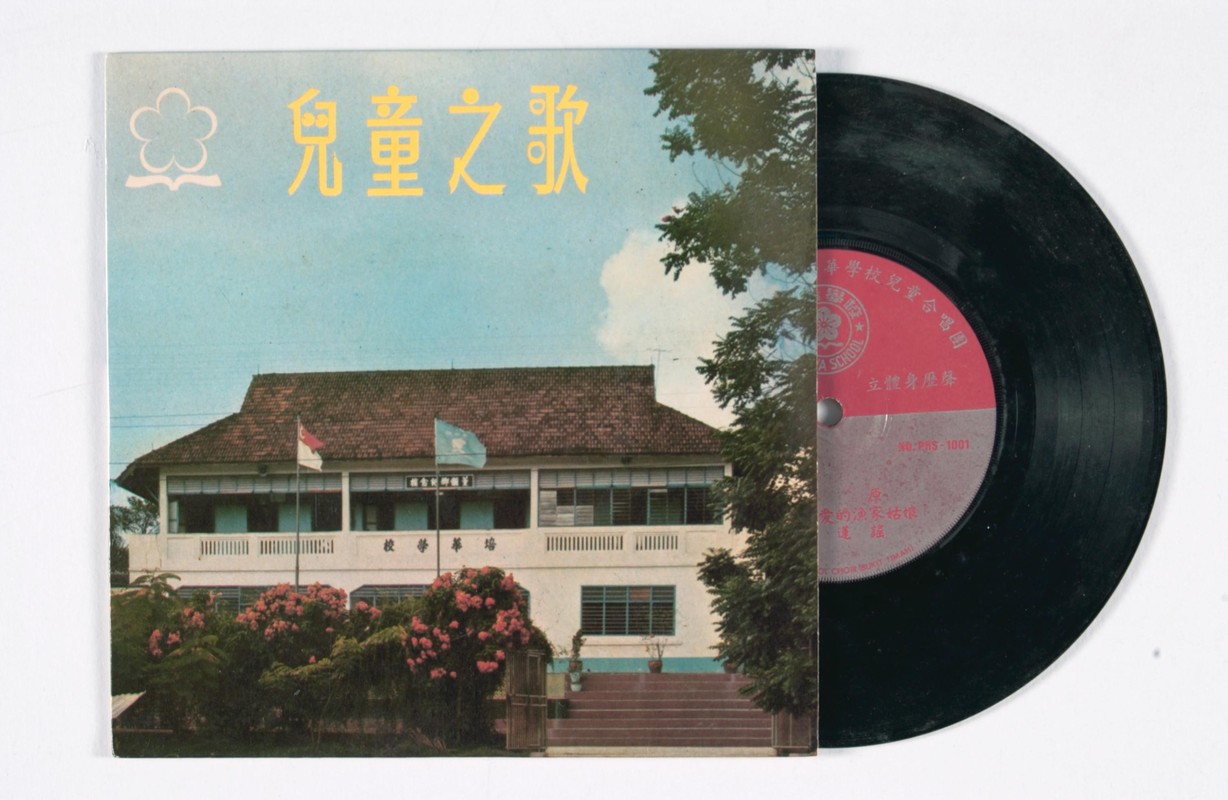National flags in Singapore’s Chinese school textbooks
The national flag was an important topic in language textbooks, as the instilling of nationalistic concepts and a sense of loyalty began with education. While Singapore’s Chinese-medium schools were around for just over a hundred years, the national flags in their textbooks are a testament to the island’s four stages of political transformation: colonisation, self-governance, merger, and independence.
The Chinese flag
When Singapore was still ruled by the British, Chinese-medium schools had no place in the education system. At the beginning, the British government left them to fend for themselves. The Republican government in control of China at that time could still send officials from its education ministry to inspect and guide Chinese schools in Singapore and Malaya. Chinese schools in Singapore used textbooks published in China, with content that instilled a sense of identification with the Republic of China. A prime example was “Guoqi ge” (The Flag Song) in Volume Three of Guoyu jiaokeshu (Textbook of Chinese): “The national flag flies, the blue sky is high, the sun is bright, and a red glow fills the land. The national flag soars, the blue sky(qingtian) is endless, the sun is at its highest, and a red glow (bairi) fills the land. The national flag is beautiful, blue sky, bright sun, with red all around. Oh flag that I love I salute you with bow.” This was a political oath to the Republic of China’s flag, which was “blue sky, bright sun, with red all around” (qingtian bairi mandi hong).

One textbook, two flag songs
The above-mentioned texts championing loyalty to the Republic of China caught the attention of the colonial authorities in the 1930s, and they began to ban textbooks that did not serve the interests of the British. Responding to criticism from the colonial government, the publishing house added the chapter, “The Flag of the United Kingdom”, to the same textbook. It introduced the flag of the colonial masters in a song: “The British flag is so beautiful, with two crosses crossed set against a blue background. England, Scotland and Ireland united and never to separate.” The introduction of the Union Jack nominally balanced out the one-sided emphasis on Chinese political identity in the textbook.

Ten years after the end of World War II, despite the anti-colonial atmosphere, Singapore and Malaya still had not gained independence. Their identification with “the land of Malaya”, however, grew increasingly intense. This was reflected in Chinese school textbooks. Singing the praises of Malaya was a new trend, and the earlier-taught concepts of Nanyang, as well as the China political overtones in the original textbooks, quickly faded. Concepts of Chinese cultural identity (zhonghua wenhua rentong) replaced Chinese political identity towards China. The chapter “Women ai malaiya” (We Love Malaya) in Volume Two of Xiandai guoyu duben (Modern Series Textbook: Chinese Language), published by the Shanghai Book Company in 1955 for high school students, highlighted the affection Chinese immigrants had for Malaya during the anti-colonial period.
Singapore’s Bangqisong (Ode to the State Flag)
In 1957, the Malay peninsula achieved independence and formed the Federation of Malaya. Singapore would still belong to the British for another two years. In 1959, the British finally agreed to Singapore becoming a self-governing state. Chinese school textbooks were then updated to include the Singapore state flag and state anthem to the entire cohort of students. In the first volume of the 1961 textbook Xinghua wenxuan (Selected Chinese Works of Singapore), the chapter “Xinjiapo de bangqi he banghui” (State Flag and State Emblem of Singapore) conveyed the concept of a self-governing state. In “Bangqisong” (Ode to the State Flag), included in the second volume of the teaching resource of Huayu (The Chinese Language) for Primary Five learners, its lyrics “The red and white state flag flies in the sky, with a crescent moon arising amidst the red accompanied by five stars”, was a sign of the fading presence of the national flag of the Republic of China, which had been flying in Chinese school textbooks for nearly half a century by then.

In 1963, just four years after Singapore became a self-governing state, Singapore and Malaya were again reshaped by political shifts. Malaysia was established, and Singapore joined the newly-formed political entity that comprised Malaya, Sarawak and Sabah. Against these developments, textbooks were quickly updated to reflect the new political landscape.
However, two years later, just as Singaporeans were still familiarising themselves with the Malaysian flag, the political tides turned. Singapore separated from Malaysia to become an independent republic. The developments happened so quickly that there was no time to revise the textbooks. Teachers resorted to getting students to pencil the word “Singapore” over the word “Malaysia” wherever it was found in the textbooks.
Post-independence, the concept of national identity was a major theme in Chinese textbooks, especially in primary school. The number of chapters focusing on national education expanded significantly, more so than in the earlier periods. Beyond introducing the national flag, teachings aimed at cultivating national consciousness increased significantly, covering topics such as reciting the Pledge, National Service, racial harmony and others.
The development of Chinese school textbooks reflects Singapore’s political evolution through history, from colonisation to self-governance, and merger to independence. These textbooks documented the four important stages of Singapore’s political development in a far more pronounced manner than English textbooks at the time.
This is an edited and translated version of 华校课本里嬗变的国旗. Click here to read original piece.
Tay, Liang Soo. Malaixiya huawen jiaoyu fazhan shi [History of the development of Chinese education in Malaysia], Vol. 1. Kuala Lumpur: Malaysia Chinese School Teachers’ Association, 1998. | |
Yeap, Chong Leng and Wee, Tong Bao, eds. Xin ma yin huaxiao jiaokeshu fazhan huigu [Review of textbook development in Chinese schools in Singapore, Malaysia, and Indonesia]. Singapore: The Chinese Heritage Centre, 2005. | |
Chew, Wee Kai. “Cong guowen guoyu dao huayu huawen de zhuanzhe lu” [The evolution from Guoyu, guowen to huayu huawen], Yihe Shiji, Issue 39 (2019): 30–36. |










